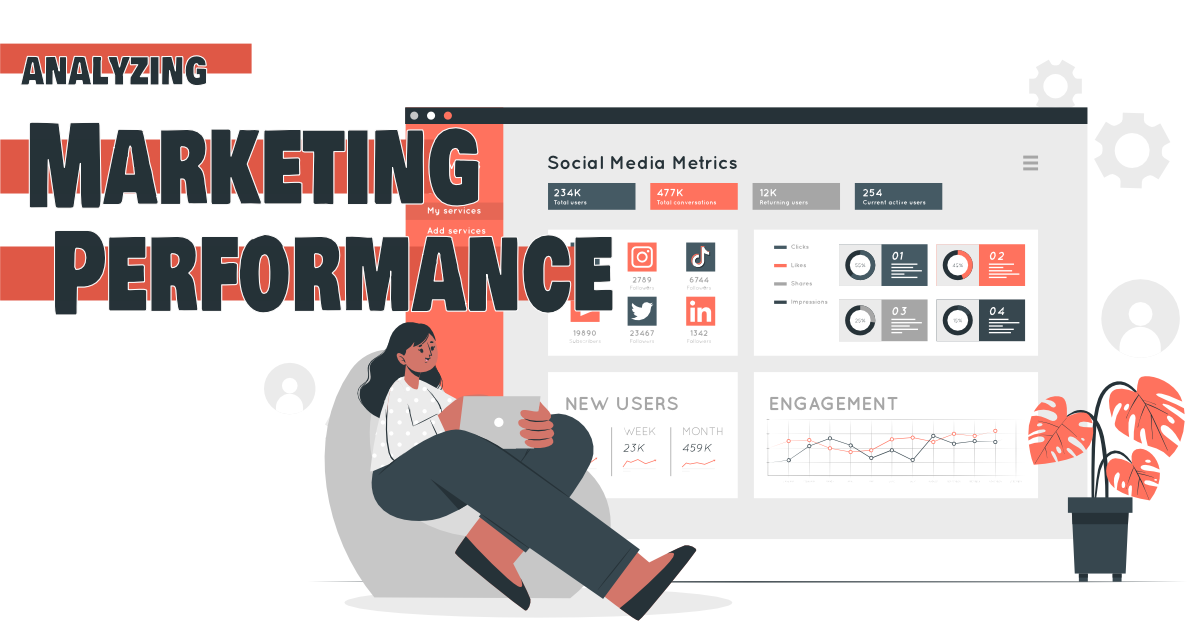Developing a minimum viable product (MVP) is an essential step in the process of starting a business. An MVP is a version of a product or service that has the minimum set of features required to satisfy early customers and provide valuable feedback for future development. In this article, we will discuss how to develop an MVP and launch it successfully. By the end of this article, you will have a better understanding of how to develop an MVP and launch it successfully. This will help you to create a product or service that meets the needs of your customers and provides valuable feedback for future development.
Understanding the concept of a minimum viable product (MVP) and its importance in the product development process
A minimum viable product (MVP) is a version of a product or service that has the minimum set of features required to satisfy early customers and provide valuable feedback for future development. The concept of an MVP was first introduced by Eric Ries in his book “The Lean Startup,” and it has since become a popular method for product development. In this article, we will discuss the concept of an MVP, its importance in the product development process, and the benefits it can provide to entrepreneurs.
- The concept of an MVP: An MVP is a version of a product or service that has the minimum set of features required to satisfy early customers and provide valuable feedback for future development. It is designed to test the market and gather feedback from customers before investing in a full-scale product or service.
- Importance of MVP in product development: MVPs are important in the product development process because they allow entrepreneurs to test the market and gather feedback from customers before investing in a full-scale product or service. This can help to reduce the risk of failure and ensure that the final product meets the needs of customers.
- Benefits of MVP: MVPs provide several benefits to entrepreneurs, including:
- Reduced risk of failure: By testing the market with an MVP, entrepreneurs can gather feedback from customers and make adjustments before investing in a full-scale product or service.
- Cost-effective: MVPs are less expensive to develop than full-scale products, which can help to reduce costs.
- Faster to market: MVPs can be developed and launched faster than full-scale products, which can help to gain a competitive advantage.
- Gathering valuable feedback: MVPs provide valuable feedback from customers, which can be used to improve the final product.
- How to develop an MVP: To develop an MVP, entrepreneurs should:
- Identify the minimum set of features required to satisfy early customers and provide valuable feedback
- Validate the MVP with customers
- Iterate and improve the MVP based on feedback
- Test, measure, and monitor the MVP
- Scale the MVP based on customer feedback
In conclusion, A minimum viable product (MVP) is a version of a product or service that has the minimum set of features required to satisfy early customers and provide valuable feedback for future development. The concept of an MVP is important in the product development process because it allows entrepreneurs to test the market and gather feedback from customers before investing in a full-scale product or service. By developing an MVP, entrepreneurs can reduce the risk of failure, save costs, go to market faster, and gather valuable feedback to improve the final product. Additionally, testing, measuring, and monitoring the MVP, and scaling it based on customer feedback are crucial steps in the MVP development process.
Tips for defining and prioritizing the core features of your MVP
Developing a minimum viable product (MVP) requires entrepreneurs to identify and prioritize the core features of their product or service. These features are the minimum set of functionality that is required to satisfy early customers and provide valuable feedback for future development. In this article, we will discuss tips for defining and prioritizing the core features of your MVP.
- Identify your target market: The first step in defining the core features of your MVP is to identify your target market. This will help you to understand the needs and preferences of your customers, and to identify the features that are most important to them.
- Define the problem your MVP will solve: To define the core features of your MVP, you need to understand the problem that your product or service will solve. By clearly defining the problem, you will be able to identify the features that are essential for solving it.
- Gather feedback from potential customers: To prioritize the core features of your MVP, gather feedback from potential customers. This will help you to understand which features are most important to them, and to prioritize the development of those features.
- Prioritize features based on customer value: Prioritize the features based on the value they will provide to customers. The features that provide the most value to customers should be given the highest priority.
- Consider the technical feasibility of features: While prioritizing features, consider the technical feasibility of each feature. It’s essential to understand the development resources and timeline required to implement each feature.
- Use a product roadmap: A product roadmap can be an effective tool for prioritizing the core features of your MVP. It can help you to visualize the development process and to identify the features that are most important at each stage.
- Continuously gather feedback: Continuously gather feedback from customers and revise your MVP’s features based on the feedback received. This will help you to ensure that the MVP is meeting the needs of customers and will help to improve the final product.
In conclusion, developing a minimum viable product (MVP) requires entrepreneurs to identify and prioritize the core features of their product or service. The key to identifying the core features of an MVP is to understand the target market, define the problem the MVP will solve, gather feedback from potential customers, prioritize features based on customer value, consider the technical feasibility of each feature, use a product roadmap and continuously gather feedback from customers. By following these tips, entrepreneurs can ensure that their MVP has the minimum set of features required to satisfy early customers and provide valuable feedback for future development.
Techniques for creating wireframes and prototypes of your MVP
Creating wireframes and prototypes of your minimum viable product (MVP) is an essential step in the development process. Wireframes and prototypes allow entrepreneurs to communicate their ideas and test the functionality of their MVP before committing to full development. In this article, we will discuss techniques for creating wireframes and prototypes of your MVP.
- Wireframes: A wireframe is a visual representation of the layout and structure of a website or application. It helps to communicate the basic design and functionality of an MVP without including any styling or visual details. Wireframes are typically created using wireframing tools such as Balsamiq, Axure, or Moqups.
- Techniques for creating wireframes:
- Start with paper sketches: Before creating digital wireframes, entrepreneurs can start by sketching their ideas on paper. This allows them to quickly experiment with different layouts and structures before committing to a digital wireframe.
- Use wireframing tools: There are many wireframing tools available that make it easy to create digital wireframes. These tools typically have pre-built UI elements and templates that can be used to create wireframes quickly.
- Keep it simple: When creating wireframes, it’s essential to keep it simple. Avoid adding unnecessary details and focus on the core functionality of your MVP.
- Prototypes: A prototype is a working model of an MVP that allows entrepreneurs to test the functionality and usability of their product or service. Prototypes can be created using prototyping tools such as InVision, Figma, or Marvel.
- Techniques for creating prototypes:
- Use prototyping tools: There are many prototyping tools available that make it easy to create interactive prototypes. These tools typically have pre-built UI elements and templates that can be used to create prototypes quickly.
- Test with customers: Once the prototype is ready, entrepreneurs can test it with customers to gather feedback and make adjustments.
- Keep it interactive: To make it easy for customers to test the functionality of the MVP, keep the prototype interactive. This allows customers to test the MVP’s core functionality and give feedback on the usability.
In conclusion, creating wireframes and prototypes of your MVP is an essential step in the development process. Wireframes help to communicate the basic design and functionality of an MVP, while prototypes allow entrepreneurs to test the functionality and usability of their product or service. Techniques for creating wireframes include starting with paper sketches, using wireframing tools, and keeping it simple. Techniques for creating prototypes include using prototyping tools, testing with customers, and keeping it interactive. By following these techniques, entrepreneurs can create accurate wireframes and prototypes of their MVP, which will help them to communicate their ideas and test the functionality of their MVP before committing to full development.
How to conduct user testing and gather feedback on your MVP
Conducting user testing and gathering feedback on your minimum viable product (MVP) is essential for refining and improving the product before its official launch. User testing allows entrepreneurs to gather valuable insights and feedback from real users and make adjustments accordingly. In this article, we will discuss how to conduct user testing and gather feedback on your MVP.
- Define your testing objectives: Before conducting user testing, entrepreneurs should define their testing objectives. This includes identifying the specific features or functionality that they want to test and the questions they want to answer.
- Recruit participants: Recruiting the right participants is critical for gathering meaningful feedback. Entrepreneurs should recruit participants that match their target market and are representative of their user base.
- Conduct user testing: Once participants are recruited, entrepreneurs should conduct user testing. This can be done in-person or remotely using screen-sharing software. During user testing, entrepreneurs should observe participants using their MVP and gather feedback.
- Gather feedback: Entrepreneurs should gather feedback in various forms, including qualitative (open-ended) and quantitative (closed-ended) data. This can be done through surveys, interviews, and feedback forms.
- Analyze feedback: Entrepreneurs should analyze the feedback to identify patterns and common themes. This will help them to identify areas for improvement and to make adjustments accordingly.
- Iterate: Based on the feedback, entrepreneurs should iterate and make adjustments to their MVP. This may include adding new features, removing unnecessary features, or making changes to the user interface.
- Continuously test: Entrepreneurs should continuously test their MVP with users to gather feedback and make adjustments. As the MVP progresses, entrepreneurs should test new features, changes, and the overall MVP.
In conclusion, conducting user testing and gathering feedback on your MVP is essential for refining and improving the product before its official launch. User testing allows entrepreneurs to gather valuable insights and feedback from real users and make adjustments accordingly. Entrepreneurs should define their testing objectives, recruit participants, conduct user testing, gather feedback, analyze feedback, iterate and continuously test their MVP with users. By following these steps, entrepreneurs can ensure that their MVP is user-friendly, meets the needs of their target market, and is more likely to be successful.
Strategies for iterating and improving your MVP based on customer feedback
Iterating and improving your minimum viable product (MVP) based on customer feedback is crucial for the success of a business. Customer feedback provides valuable insights into how the MVP is being perceived and used, and it can help entrepreneurs to identify areas for improvement. In this article, we will discuss strategies for iterating and improving your MVP based on customer feedback.
- Prioritize feedback: After gathering feedback, entrepreneurs should prioritize it. Feedback should be organized by importance, and the most critical issues should be addressed first.
- Identify patterns: Feedback should be analyzed to identify patterns and common themes. This will help entrepreneurs to understand the root causes of issues and to make more informed decisions.
- Experiment: Entrepreneurs should experiment with different solutions to address the issues identified through customer feedback. This may include adding new features, removing unnecessary features, or making changes to the user interface.
- Test and validate: Entrepreneurs should test and validate the changes made to the MVP to ensure that they are addressing the issues identified through customer feedback. This can be done by conducting user testing and gathering feedback from a small group of users.
- Continuously iterate: Based on the feedback, entrepreneurs should continuously iterate and make adjustments to their MVP. This process of gathering feedback, making changes, and testing should be repeated until the MVP meets the needs of the target market and is user-friendly.
- Communicate: Entrepreneurs should communicate the changes made to the MVP to the customers, they can do this through newsletters, updates and social media.
In conclusion, iterating and improving your MVP based on customer feedback is crucial for the success of a business. Customer feedback provides valuable insights into how the MVP is being perceived and used, and it can help entrepreneurs to identify areas for improvement. Entrepreneurs should prioritize feedback, identify patterns, experiment, test and validate, continuously iterate and communicate the changes made to the MVP to the customers. By following these strategies, entrepreneurs can ensure that their MVP meets the needs of the target market and is user-friendly, which will increase the chances of success.
The role of A/B testing in validating and optimizing your MVP
A/B testing is a powerful technique that allows entrepreneurs to validate and optimize their minimum viable product (MVP) by comparing different versions of a product or feature. It is a way to determine which version of a product is more effective by testing it with a small group of users. In this article, we will discuss the role of A/B testing in validating and optimizing an MVP.
- Define the goal: Before conducting A/B testing, entrepreneurs should define the goal of the test. This includes identifying the specific feature or functionality that they want to test and the question they want to answer.
- Create variations: Once the goal is defined, entrepreneurs should create variations of the feature or functionality being tested. These variations should be different enough to provide meaningful data.
- Test with a sample group: Entrepreneurs should then test the variations with a small group of users. This group should be representative of the target market and should be randomly assigned to either the control group or the test group.
- Collect and analyze data: Entrepreneurs should collect data on how users interact with the different variations and analyze the data to identify patterns and common themes. This will help entrepreneurs to identify which variation is more effective.
- Implement changes: Based on the data collected, entrepreneurs should implement the changes that have been proven to be effective.
- Continuously test: Entrepreneurs should continuously test different variations and make adjustments to the MVP to optimize its performance.
- Communicate: Entrepreneurs should communicate the changes made to the MVP to the customers, they can do this through newsletters, updates and social media.
In conclusion, A/B testing is a powerful technique that allows entrepreneurs to validate and optimize their MVP by comparing different versions of a product or feature. Entrepreneurs should define the goal, create variations, test with a sample group, collect and analyze data, implement changes, continuously test and communicate the changes made to the MVP to the customers. By following these steps, entrepreneurs can ensure that their MVP meets the needs of the target market and is user-friendly, which will increase the chances of success.
Tips for creating a launch plan and promoting your MVP
Creating a launch plan and promoting your minimum viable product (MVP) is crucial for the success of your business. A launch plan is a strategic roadmap that outlines the steps and actions needed to successfully introduce your MVP to the market. In this article, we will discuss tips for creating a launch plan and promoting your MVP.
- Define your target market: Before creating a launch plan, entrepreneurs should define their target market. This includes identifying the specific demographics, needs, and pain points of the customers you want to reach.
- Set clear goals: Entrepreneurs should set clear goals for their MVP launch. These goals should be specific, measurable, achievable, relevant, and time-bound (SMART).
- Develop a messaging strategy: Entrepreneurs should develop a messaging strategy that clearly communicates the value of their MVP to their target market. This includes creating a tagline, mission statement, and key messaging points.
- Create a content marketing plan: Entrepreneurs should create a content marketing plan that outlines the types of content they will create and share to promote their MVP. This may include blog posts, videos, infographics, and social media updates.
- Build relationships: Entrepreneurs should build relationships with influencers, media outlets, and other relevant stakeholders. This will help to increase visibility and credibility for their MVP.
- Use paid advertising: Entrepreneurs should use paid advertising to reach a larger audience and generate leads. This can be done through social media advertising, Google AdWords, or other platforms.
- Plan a launch event: Entrepreneurs should plan a launch event to officially introduce their MVP to the market. This can be done in-person or virtually, and it should include a demonstration of the MVP, testimonials, and a Q&A session.
- Monitor and analyze: Entrepreneurs should monitor and analyze the performance of their MVP after launch. This includes tracking metrics such as user engagement, conversion rates, and revenue.
In conclusion, creating a launch plan and promoting your MVP is crucial for the success of your business. Entrepreneurs should define their target market, set clear goals, develop a messaging strategy, create a content marketing plan, build relationships, use paid advertising, plan a launch event and monitor and analyze the performance of their MVP after launch. By following these tips, entrepreneurs can ensure that their MVP is successfully introduced to the market and reaches the right audience.
The importance of creating a landing page or website to promote your MVP
Creating a landing page or website to promote your minimum viable product (MVP) is an essential step in the product development process. A landing page is a standalone web page that is designed to capture leads or encourage a specific action from a visitor. In this article, we will discuss the importance of creating a landing page or website to promote your MVP.
- Establish credibility: A landing page or website allows entrepreneurs to establish credibility for their MVP by providing information about the product, the team behind it, and customer testimonials.
- Capture leads: A landing page or website allows entrepreneurs to capture leads by providing a form for visitors to leave their contact information. This information can be used to follow up with potential customers and generate sales.
- Build an email list: A landing page or website allows entrepreneurs to build an email list by providing a form for visitors to sign up for updates on the product. This can be used to send updates, promotions, and other relevant information to potential customers.
- Optimize conversions: A landing page or website allows entrepreneurs to optimize conversions by testing different layouts, headlines, images, and other elements. This can be done through A/B testing to see which version of the page converts the most visitors into leads.
- Provide customer support: A landing page or website can also be used to provide customer support by including FAQs, a contact form, and a knowledge base. This can help to address customer concerns and questions before and after a sale.
- Track analytics: A landing page or website allows entrepreneurs to track analytics, such as the number of visitors, the bounce rate, and the conversion rate. This information can be used to optimize the page and improve performance.
In conclusion, creating a landing page or website to promote your MVP is essential for the success of your business. It allows entrepreneurs to establish credibility, capture leads, build an email list, optimize conversions, provide customer support and track analytics. By following these tips, entrepreneurs can ensure that their landing page or website is effective in promoting their MVP and reaching the right audience.
How to use social media and online platforms to promote your MVP
Using social media and online platforms to promote your minimum viable product (MVP) is a cost-effective and efficient way to reach a large audience and generate leads. In this article, we will discuss how to use social media and online platforms to promote your MVP.
- Identify the right platforms: Entrepreneurs should identify the social media and online platforms where their target market is most active. This could include platforms like Facebook, Instagram, Twitter, LinkedIn, and more.
- Create a content strategy: Entrepreneurs should create a content strategy that outlines the types of content they will create and share to promote their MVP. This could include blog posts, videos, infographics, and social media updates.
- Build a following: Entrepreneurs should build a following on the social media and online platforms they have identified. This can be done by creating engaging content, participating in relevant communities, and running social media ads.
- Use influencer marketing: Entrepreneurs should use influencer marketing to reach a larger audience. This can be done by partnering with influencers in their industry or niche to promote their MVP.
- Use paid advertising: Entrepreneurs should use paid advertising to reach a larger audience and generate leads. This can be done through social media advertising, Google AdWords, or other platforms.
- Use customer reviews: Entrepreneurs should use customer reviews to promote their MVP. This can be done by encouraging satisfied customers to leave reviews on social media and online platforms.
- Use email marketing: Entrepreneurs should use email marketing to promote their MVP. This can be done by sending updates, promotions, and other relevant information to potential customers who have provided their email address.
- Use analytics: Entrepreneurs should use analytics to track the performance of their social media and online promotions. This includes tracking metrics such as reach, engagement, and conversions.
In conclusion, using social media and online platforms to promote your MVP is a cost-effective and efficient way to reach a large audience and generate leads. Entrepreneurs should identify the right platforms, create a content strategy, build a following, use influencer marketing, use paid advertising, use customer reviews, use email marketing and use analytics to track the performance of their promotions. By following these tips, entrepreneurs can ensure that their MVP is effectively promoted to the right audience and generates a positive return on investment.
The role of SEO and content marketing in promoting your MVP
Search engine optimization (SEO) and content marketing are essential tools for promoting your minimum viable product (MVP) online. In this article, we will discuss the role of SEO and content marketing in promoting your MVP.
- SEO: SEO is the process of optimizing your website to rank higher in search engine results pages (SERPs) for relevant keywords. This includes optimizing your website’s structure, content, meta tags, and other elements to make it more search engine friendly.
- Keyword research: Entrepreneurs should conduct keyword research to identify relevant keywords that their target market is searching for. These keywords should be included in the website’s content, meta tags, and other elements to improve search engine visibility.
- Content marketing: Content marketing is the process of creating and distributing valuable content to attract, engage and retain a clearly-defined audience. This includes creating blog posts, videos, infographics, and other types of content that provide value to your target market.
- Blogging: Entrepreneurs should create a blog on their website and regularly post new content. This can help to attract new visitors to the website, increase engagement and improve search engine visibility.
- Guest blogging: Entrepreneurs should guest blog on relevant websites to reach a larger audience and generate backlinks to their website.
- Social media promotion: Entrepreneurs should use social media to promote their blog posts and other content. This can help to drive more traffic to their website and improve search engine visibility.
- Use analytics: Entrepreneurs should use analytics to track the performance of their SEO and content marketing efforts. This includes tracking metrics such as website traffic, bounce rate, and conversions.
- Optimize for mobile: Entrepreneurs should optimize their website for mobile devices as more and more people are using their smartphones to access the internet.
In conclusion, SEO and content marketing are essential tools for promoting your MVP online. Entrepreneurs should conduct keyword research, create valuable content, use social media to promote their content, use analytics and optimize their website for mobile devices to improve search engine visibility and reach a larger audience. By following these tips, entrepreneurs can ensure that their MVP is effectively promoted to the right audience and generates a positive return on investment.













